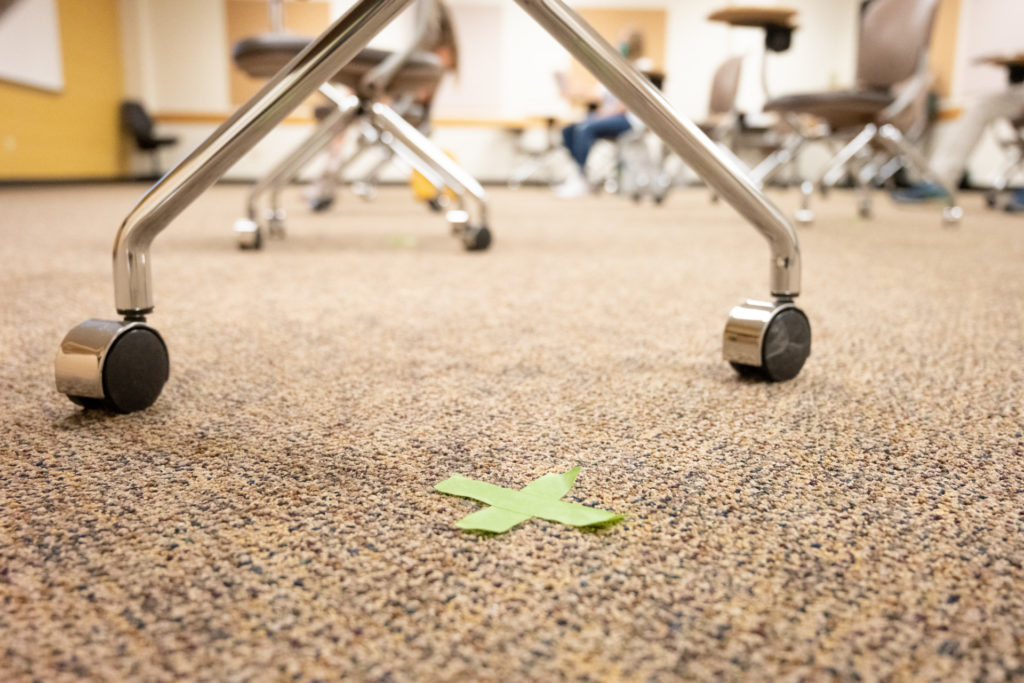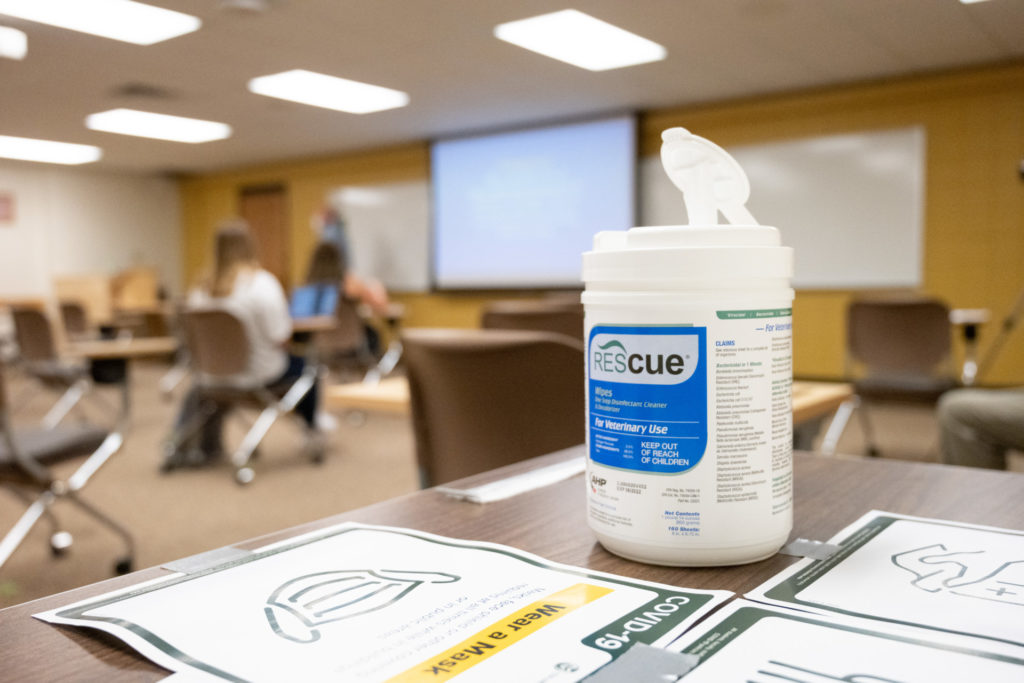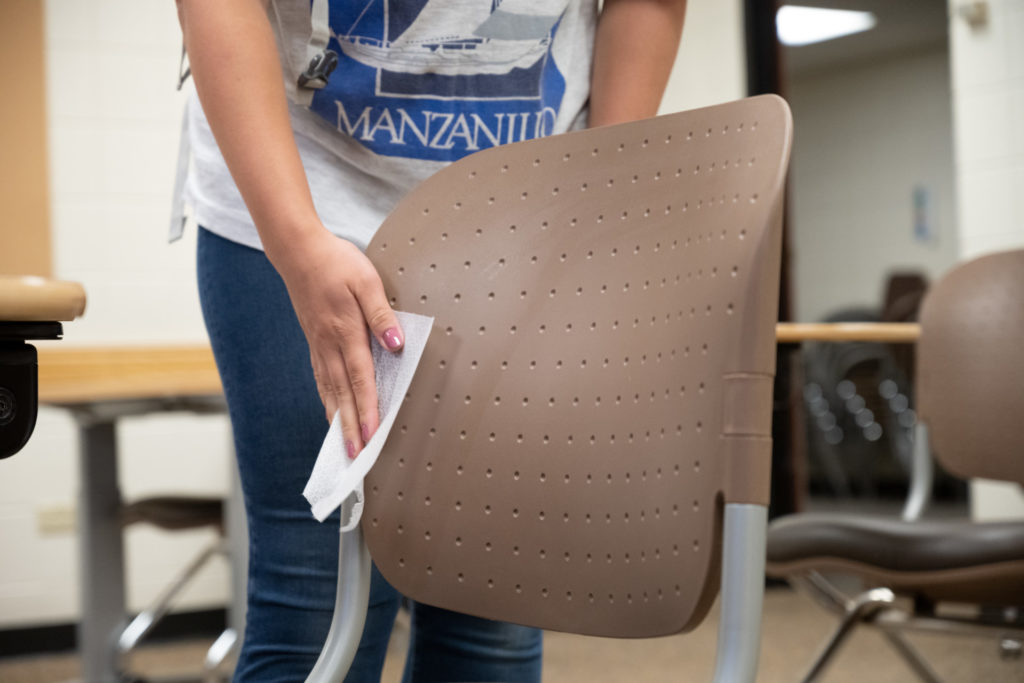Video by Greg Luft with footage from Ryan Crist and Brian Buss. Narrated by Sarah Pooler. Masks made and demonstrated by Clara Scholz.
Wearing face coverings, students walk into a classroom through a door marked “Entry only.” They stop at a table to apply hand sanitizer and grab a disinfecting wipe to clean their desks, which are spaced six feet apart. The instructor, also wearing a mask, has five students in the classroom, with another half dozen participating virtually. He’s sharing his screen with the remote students, who can hear him through a microphone connected to his laptop. His presentation is being recorded as well, for any students who had to miss class due to illness.
It’s a glimpse of one version of the new normal at Colorado State University, at least for the fall, as faculty and students return to campus with new health protocols prompted by the COVID-19 pandemic.
Mike Mansfield, a CSU history instructor, is leading one of three classes at the University where the new protocols are being demonstrated in preparation for the start of the semester. Students who attended his course on African-American history in person in the Clark Building July 15 said that while the changes will take some getting used to, it’s good to be back on campus.
“It beats being at home,” said senior English major William Blythe. “I’m glad to be back in class. I’m willing to do whatever it takes so that we don’t have to go through it all again. Just follow the rules.”
Conor Farrell, a junior history major, agreed.
“Obviously we want to go back to class, and this is the best way to do it,” he said.
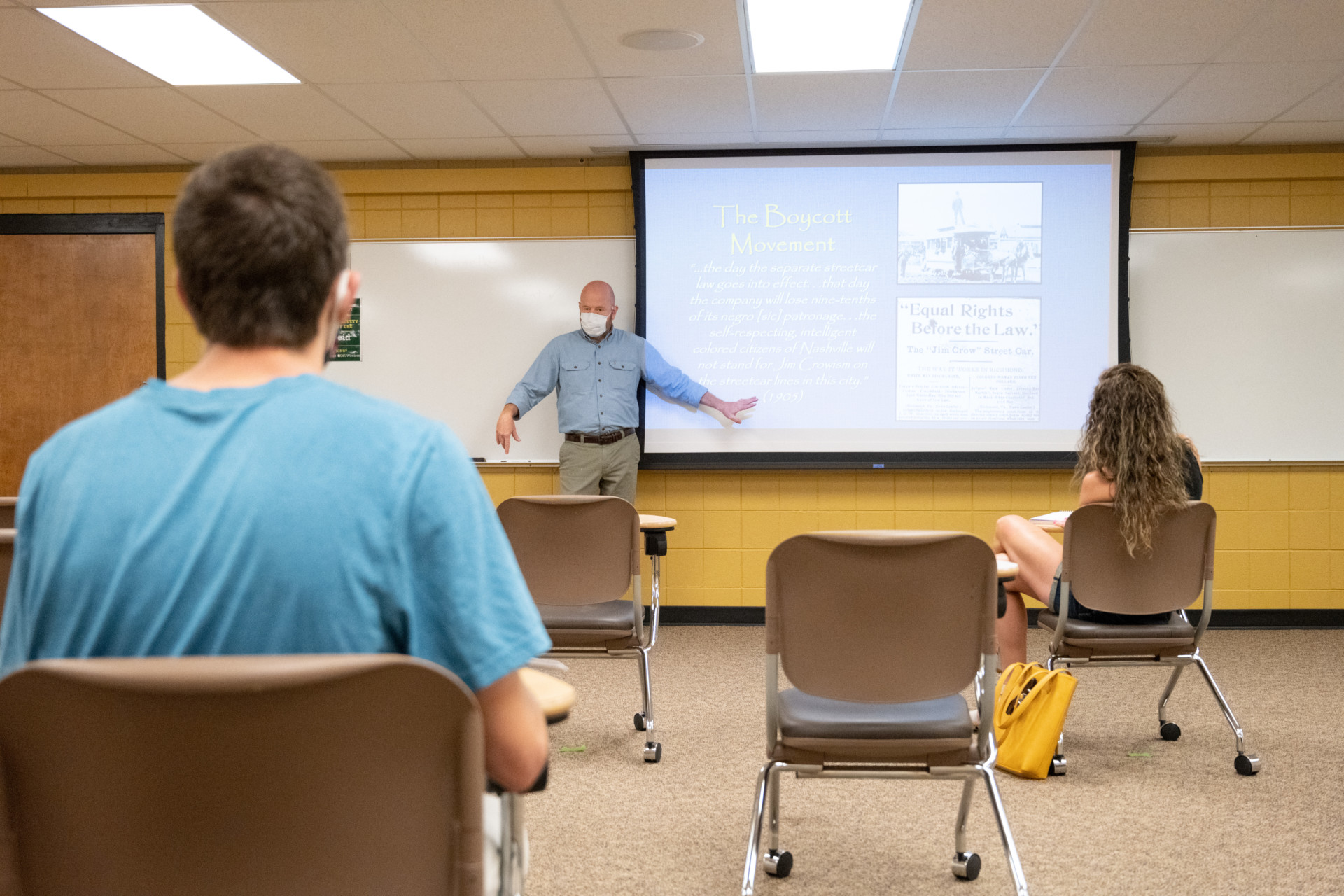
History Instructor Mike Mansfield teaches a class on African-American history in the Clark Building on July 15. Photos by John Eisele
Patience will be key
For Mansfield, the new accommodations are about moving forward, with patience.
“This is first and foremost about people’s health,” he said. “We’re all in this together. You can sit in your closet and complain, or you can move on. The biggest feedback I’ve gotten from students is that enough is enough; they don’t want to be at home anymore. Is it more work on our end? Sure. But in the grand scheme of things, it could be a lot worse.”
Everyone coming to campus must complete an online symptom checker daily before arriving, and faculty will be creating a seating chart with assigned desks in case a student becomes ill and contact tracing is necessary. A student-specific symptom checker will be launched on RAMweb in a few weeks. Facilities Management is disinfecting and cleaning all used spaces every day.
“Faculty keep asking what this will look like, and these pilot classes are good examples,” College of Liberal Arts Dean Ben Withers said. “We see this as a demonstration. This is our opportunity to get a sense of what we’ve been talking about all summer, which is how to create a healthful learning environment.”
In addition to Mansfield’s class, the summer courses implementing the health guidelines include one in the School of Education taught by Professor Sharon Anderson and one in the Department of Forest and Rangeland Stewardship taught by Master Instructor Robert “Rocky” Coleman.
“We are so thankful that these three faculty members decided to do this,” Withers said. “The questions they had helped us think through all of this even more. These summer pilot courses — along with workshops provided by The Institute for Learning and Teaching, CSU Online and within departments — are examples of how we’re talking to and working with faculty to make the fall work in practice.”
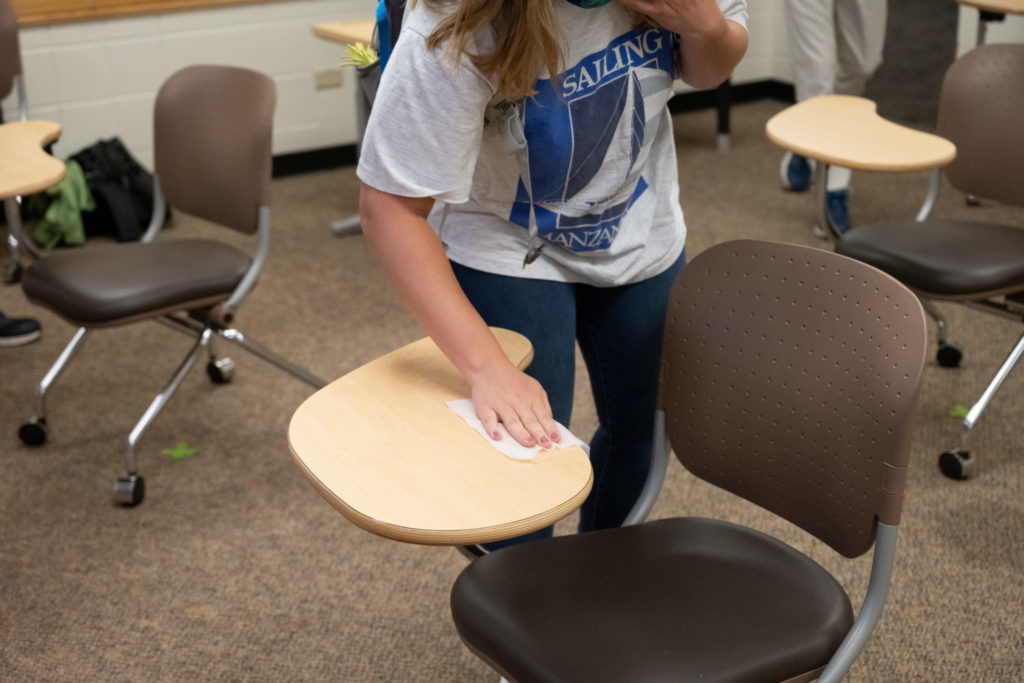
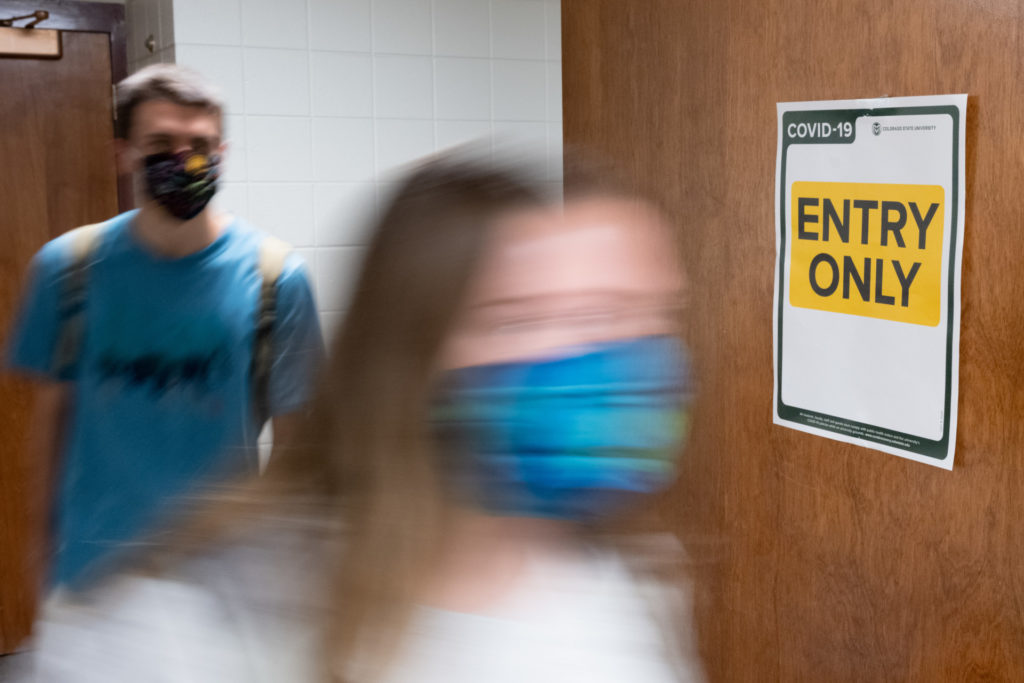
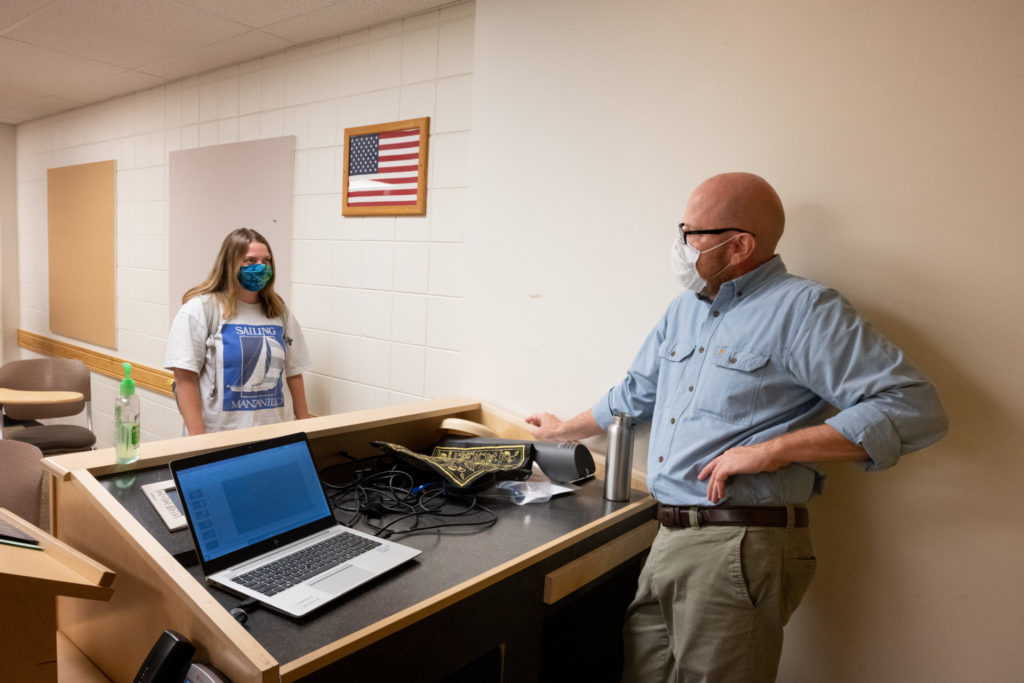
Communicate early and often
Students, faculty and administrators agree that communication will be crucial.
“With their students, we want faculty to acknowledge and recognize that this is new and difficult for everyone,” said Vice Provost for Undergraduate Affairs Kelly Long, who chairs the Teaching and Learning Continuity and Recovery Task Force at CSU. “Anything faculty can do in those first four weeks to offer assurance and comfort, and the idea that we’re all supporting one another, will be important. Rams are looking after Rams.”
“This will require being patient, and a little bit tolerant and understanding, because this is an evolving process,” added Lori Lynn, executive director of the CSU Health Network and co-chair of the Pandemic Preparedness Team. “People should communicate if there are issues, so that we can try to assist them.”
Long credited Associate Provost Steve Dandaneau and CSU Summer Director Anne Van Arsdall with leading the effort to pilot the new health protocols, which have helped the CSU community think through a variety of possible scenarios.
For instance, if any students arrive to class without a face covering, faculty will tell them where they can get one. Students will be asked to not congregate in hallways and to wait for classrooms to completely empty before entering, especially classrooms that have only one door. Faculty will need to communicate with their students before the semester begins if a hybrid or “hyflex” model will be used to simultaneously teach students in person and virtually, as in Mansfield’s class. Otherwise the whole class could show up on the first day to a classroom that can only accommodate a portion of them. (CSU has posted tips and videos, among other resources, to support faculty as they implement different teaching models.)
There will be an online store for units to procure personal protective equipment, and a campaign to encourage the use of face coverings and other precautions among students. Students and faculty who experience COVID-19 symptoms will be expected to stay home and report their condition through the symptom checker.
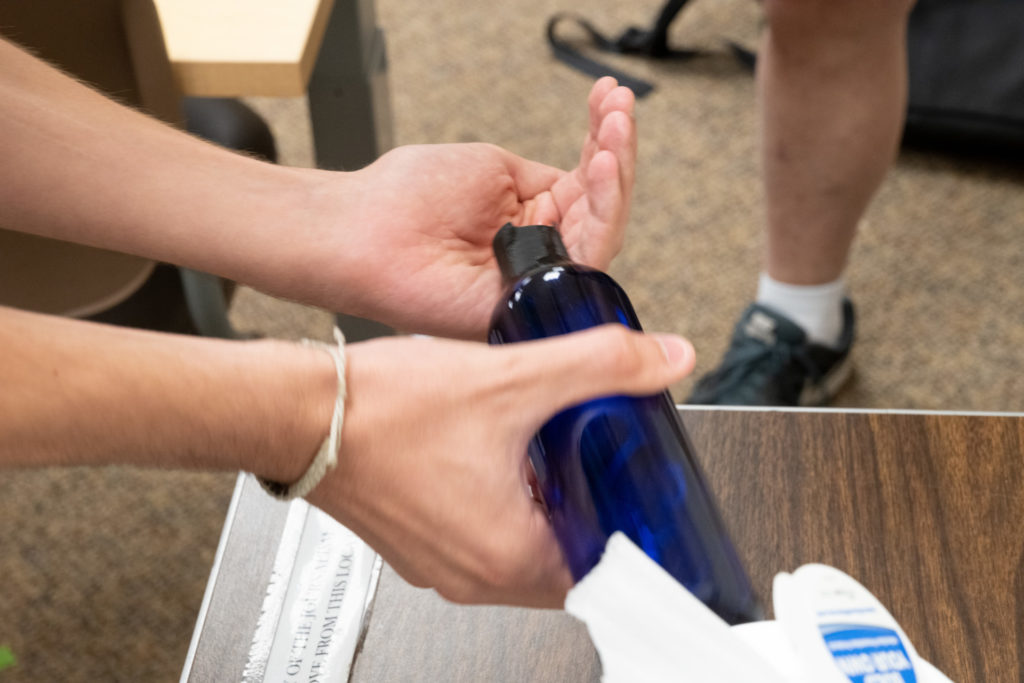
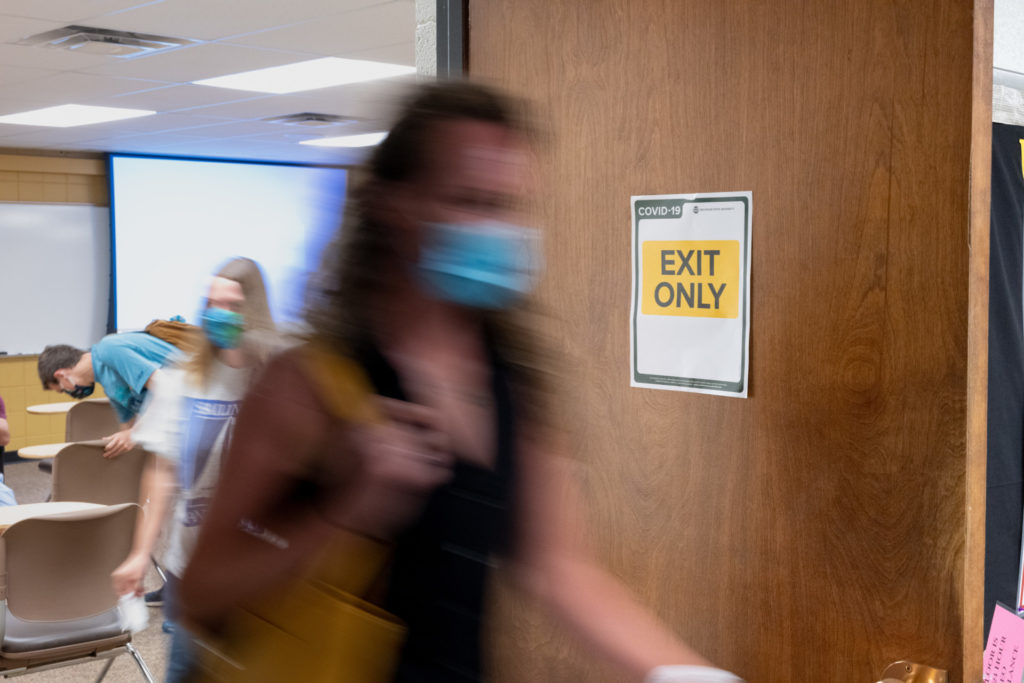
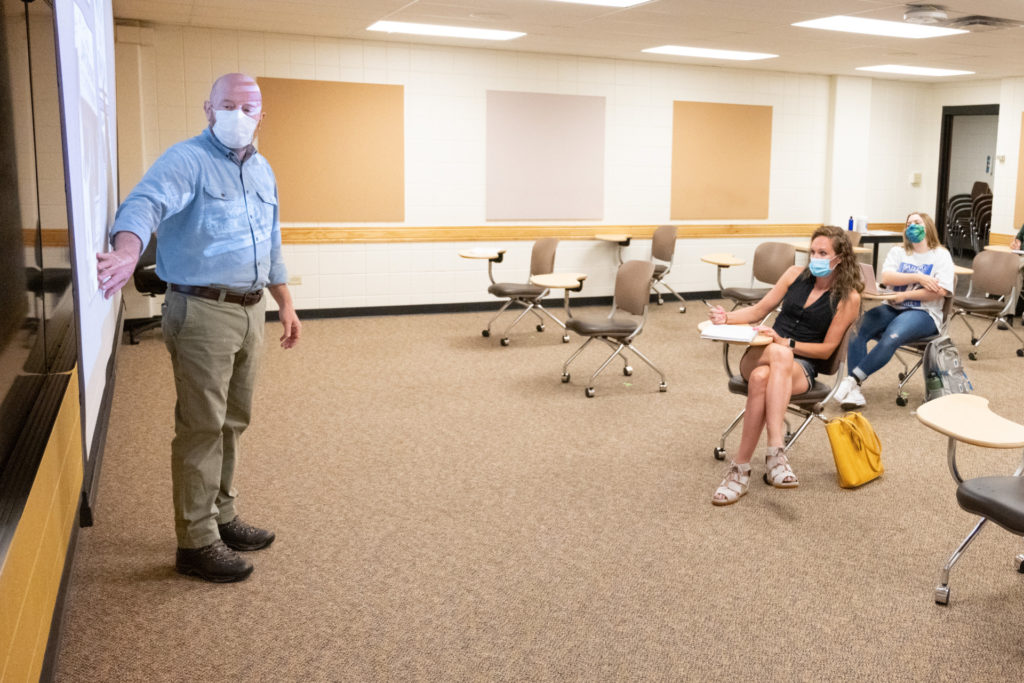
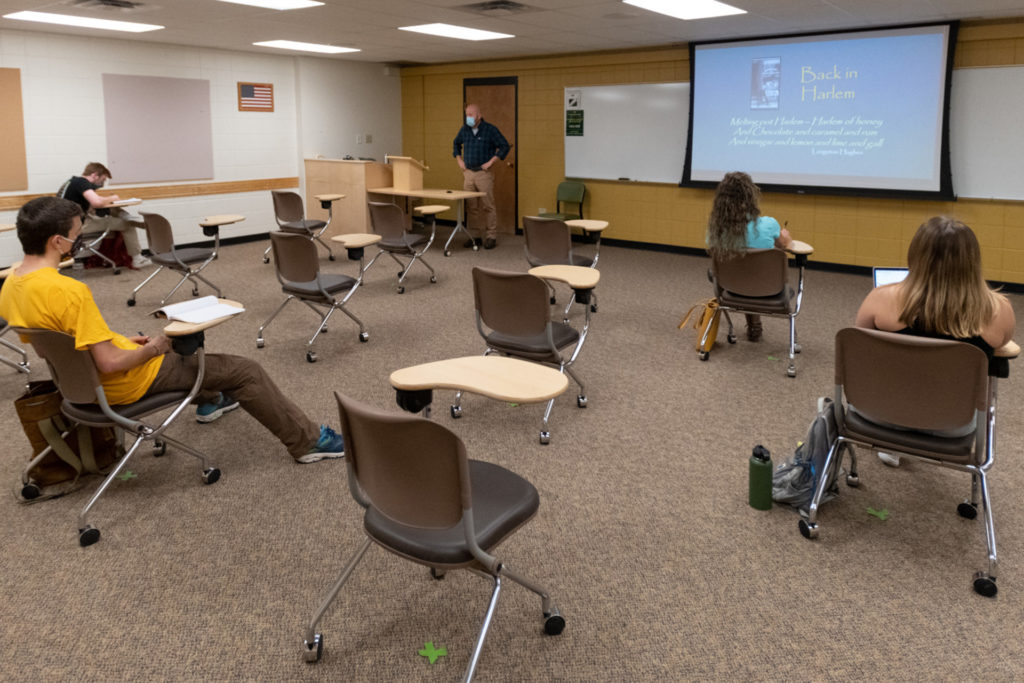
Staying flexible
The new normal will require flexibility from both faculty and students. For example, Mansfield decided to switch from a face shield to a mask after the first class period, and realized that he should repeat questions from the in-person students in case the remote students can’t hear them. While running his PowerPoint presentation, he couldn’t see comments posted in the Microsoft Teams chat field by students participating remotely, so he asked one of the students attending in person to monitor the chat for him.
“The first week of the semester will be an adjustment to something that’s totally different, that none of us have gone through,” said CSU Emergency Manager Ken Quintana, who’s been working with the three faculty members on piloting the new protocols. “Flexibility is going to be huge for all of us, not just at CSU, but across the nation.”
The health protocols give new meaning to the university’s role as a learning environment — for students, faculty and staff alike.
“We’re so excited about this summer pilot, because it shows us how eager students are to be in a community again, and how eager faculty are to meet with students,” Long said. “And this gives us an opportunity to explore what we need to think about as we roll forward with all of the face-to-face classes that we’re able to host.”
